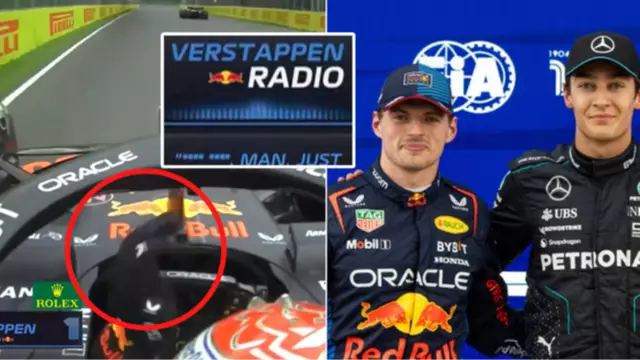What began as a dream weekend for Lewis Hamilton at the 2025 Chinese Grand Prix suddenly turned into a nightmare following his disqualification from the race.
After clinching his first win with Ferrari in Saturday’s sprint, having secured a surprising pole position the day before, the Brit’s fortunes plummeted during the main event on Sunday.
The trouble started on the opening lap when Hamilton made contact with his Ferrari teammate Charles Leclerc, damaging the Monegasque’s front wing.
The seven-time champion then struggled with pace, opting for a two-stop strategy in hopes that fresh tires would give him the pace he needed. It didn’t pay off however, and he finished the race in sixth place just behind Leclerc.
The situation then worsened when post-race checks found that the plank on Hamilton’s Ferrari was below the minimum thickness required by FIA regulations. The rearmost skid thickness measured 8.6mm at two points and 8.5mm at another — below the minimum 9mm thickness, which means an automatic disqualification.
A statement released by the FIA explained, “The plank assembly of Car 44 was measured and found to be 8.6mm (LHS), 8.6mm (car centerline) and 8.5mm (RHS). This is below the minimum thickness of 9mm specified under Article 3.5.9 of the Technical Regulations.
“During the hearing the team representative confirmed that the measurement is correct and that all required procedures were performed correctly. The team also acknowledged that there were no mitigating circumstances and that it was a genuine error by the team.
“The Stewards determine that Article 3.5.9 of the FIA Formula 1 Technical Regulations has been breached and therefore the standard penalty of a disqualification needs to be applied for such an infringement.”
The disqualification not only wiped out the eight championship points Hamilton earned for finishing in sixth place but was also another slap in the face for the team as Leclerc faced the same fate after post-race checks found his car to be under the minimum required weight, as did Pierre Gasly’s Alpine.
This wasn’t the first time Hamilton faced a disqualification for excessive plank wear however as he encountered a similar situation at the 2023 United States Grand Prix while racing for Mercedes, for which Leclerc was also disqualified for the same issue.
WHAT ARE SKID BLOCKS AND PLANKS IN F1?
Planks, usually made of permaglass, are plates installed beneath every F1 car from front to back. Introduced in 1994 following the tragic deaths of Ayrton Senna and Roland Ratzenberger, they act as a safety feature to maintain a minimum ride height and prevent cars from riding too low. They also protect the car’s floor when it goes over kerbs or rough surfaces at high speeds.
As for the skid blocks, these are titanium plates installed in different parts of the plank to help maintain the required height. They also cause the car to spark when it hits the ground.
After each race, officials select cars for checks to ensure compliance with FIA’s technical regulations. They take measurements in the 50-mm-diameter holes drilled into the plank and titanium skid blocks.
According to the regulations, the thickness of the plank assembly should be 10mm plus or minus 0.2mm when new. The plank can wear down during the race but it cannot be less than 9mm thick when measured at the designated holes. If the plank or skid’s thickness falls below 9mm, the car is in violation of the technical regulations and will be disqualified.
Article 3.5.9 of the 2025 technical regulations states, “The thickness of the plank assembly measured normal to the lower surface must be 10mm ± 0.2mm and must be uniform when new. A minimum thickness of 9mm will be accepted due to wear, and conformity to this provision will be checked at the peripheries of the designated holes.
“The plank assembly must have four precisely placed holes the positions of which are given by RV-PLANK. To establish the conformity of the plank assembly after use, its thickness will only be measured at these holes, regardless of whether plank or skid material is present.”



